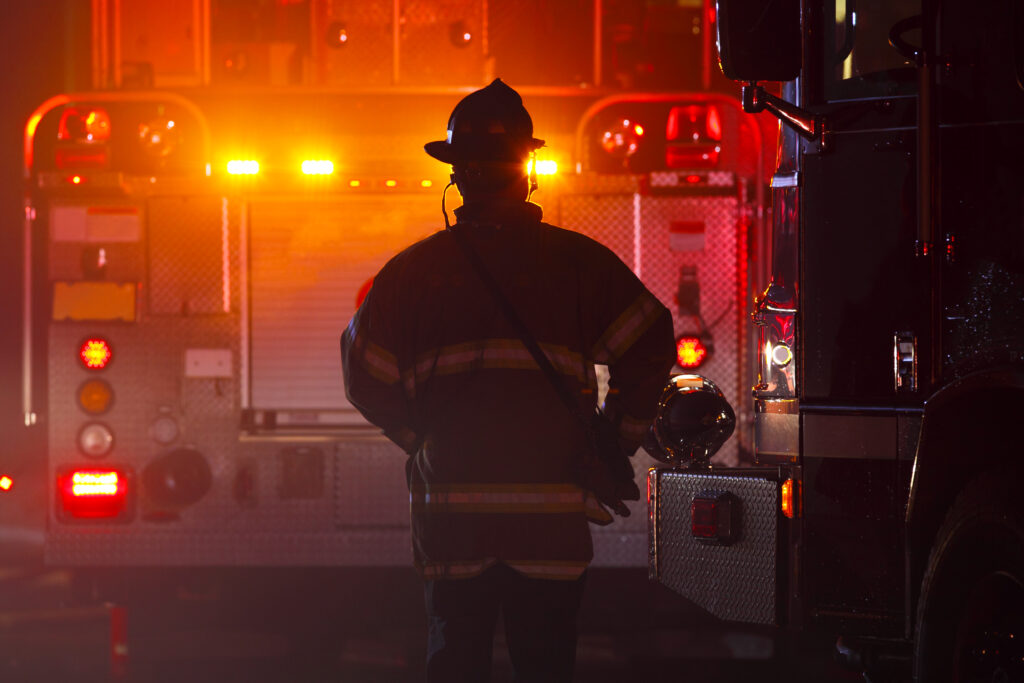
Front Seat: On-scene leadership
By Jason Clark
Features canadian firefighter fire department firefighter First Responders leadership Photo: Filo / Getty Images
Photo: Filo / Getty Images Enhancing firefighter communication for seamless operations
I rounded the corner on my 17th year as a firefighter back in February. The time, like a lot of senior firefighters will tell you, has absolutely flown by. I’ve seen a lot of changes over the years, from the trucks we’re on to the gear we wear, the way we respond to various calls and the support that we get before, during and after. We’ve also seen a fair number of new probationary firefighters join our station over the years.
I may be a part of the uncommon group that loves an activated alarm investigation. I enjoy the task of figuring out what caused the alarm. I even catch myself looking at fire alarm panels on the way into random buildings, like when I go to a movie or a hockey game. It’s weird, I know, but I think there is something we can take away and learn from every call we respond to. From finding the cause to communicating that with the crews and command, there are a lot of working parts regarding how we interact.
I’ve had to bring my on-scene communication skillset up while working with my crews over the years. Realizing that they can’t read my mind or anticipate my train of thought, I had to become more communication-oriented in the way I work with others.
So, looking at a panel that is in an alarm state in the middle of the night, showing a flow alarm –in your head you know that you want to get to that zone, inspect the cause and report the situation back to your Command. The probationary firefighter, who is just happy to be on the inside for the first time, may not know what you’re thinking or what your next steps are. I’ve gotten to the point where I “read” it out loud and will even point with my finger to show exactly where I’m looking. “We have an alarm, and the panel is showing it’s a flow alarm on the dry sprinkler system in the rear zone of the building.” I radio this out to my team, and Command will usually bring in another crew to monitor the panel for any changes.
You could find a working fire or a system failure, like a large leak that caused the alarm to activate. Either way, you and your team need to get through that entire call on the same page with communication and tactics.
Replace the “alarm sounding” call with any other scenario, be it complex or somewhat straightforward. Does your communication model with your team change? For example, in a fully involved garage fire with exposures, you won’t be pointing at a fire alarm panel explaining step by step what needs to be done, but you are still going to be direct.
You and your team need to get through that entire call on the same page with communication and tactics.
You may be a bit louder due to the environment, but still in control. I like to do things in steps because, as you know, your plan from the time you pull up to the time you leave the scene will change due to the nature of emergencies and the unknown. A simple direct command to your crew allows them to do what they are trained for, like bringing a line to the front of the structure.
This gives you time to let sink in what is going to play out next and communicate that clearly. This gives you time to accomplish a 360 if you are first in or, if you are supporting an already on-scene crew, the time to process your assigned role, and let your crew know where you want them and what tools to bring. Let them know and take the guesswork out of it.
Scenes are already complex with the number of resources that show up, the radio challenges and the coordination it takes to bring everything under control. Be confident with your communication, as you were selected to be a leader by your superiors.
By using your clear, calm and concise mentality, your team—including yourself—will be on the same page. When you find yourself moving up the rank structure, solid communication will benefit you and the teams that are supporting you in getting the scene under your command and control.
Jason Clark has been a volunteer firefighter in southwestern Ontario since 2007. Having made the transition from firefighter to captain, Jason shares his perspective on roles in the fire service and riding in the front seat. Contact Jason at jaceclark71@gmail.com or @jacejclark.
Print this page
Advertisement
- Manitoba Government dedicating three mental health workers for first responders
- Six Nations fire, police to host community awareness open house